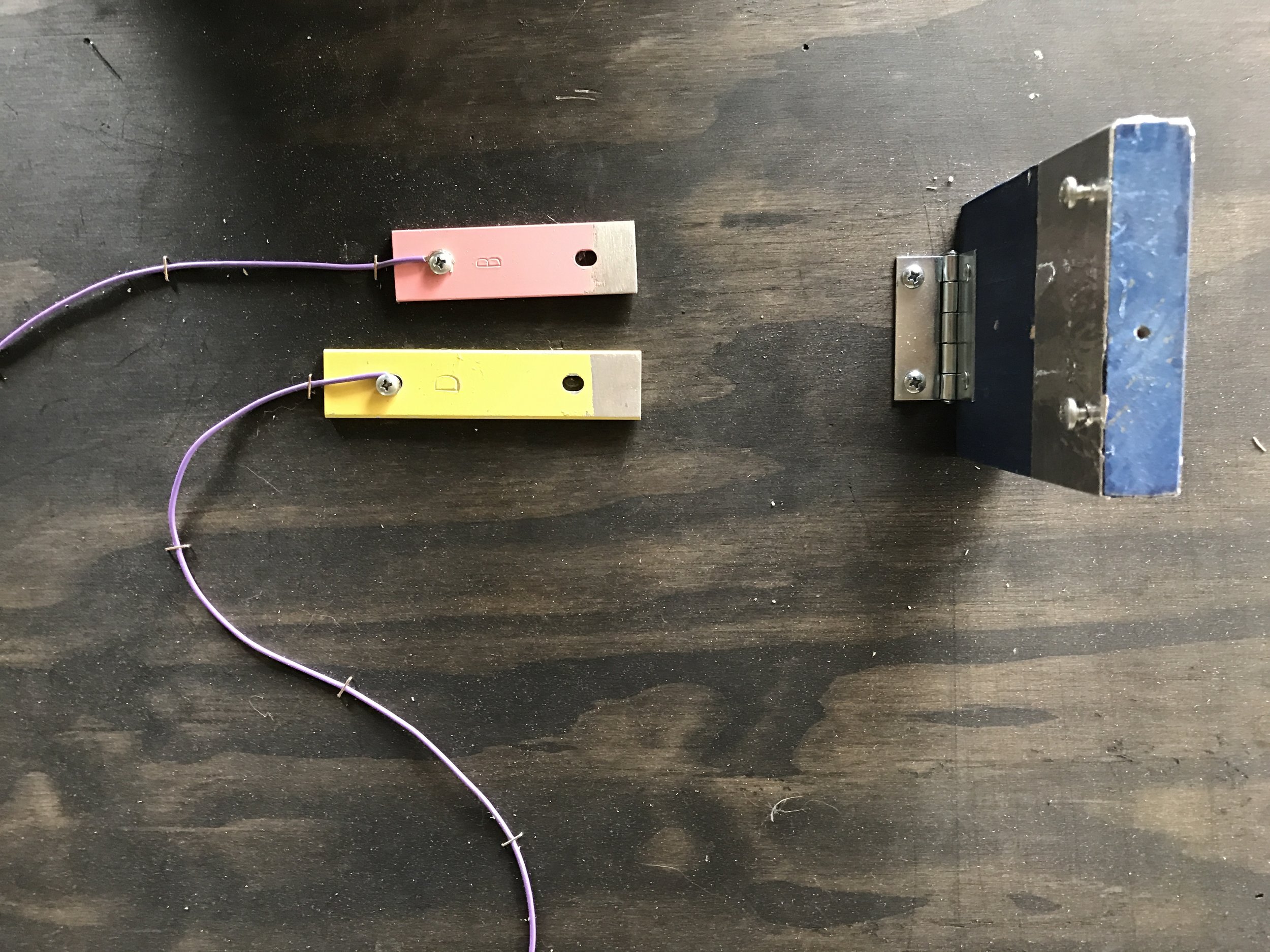Chain Reaction Preparation
On this Saturday, April 22nd, we'll be facilitating a large scale chain reaction at Chabot Science Center's Tinkerfest event! we'll have about 20 stations set up with domino blocks on either end of each table. Participants will be given the prompt of making a contraption that starts with the first domino, does something interesting to move across the surface of the table and then knocks over the next group's block. together each part of the device will be triggered in sequence (with a little help from 'the magic finger') until it reaches the spectacular finale.
Setting off these giant collaborative chain reaction machines is one of our favorite tinkering experiences and we've tried them all over the world. but it also happens to be one of the most material intensive activities because there are so many possibilities for different ways people will want to get from point a to point b. each section of the reaction will combine motions & mechanisms, electrical circuits and artistic creations.
I wanted to share a behind the scenes look at how we are getting ready for this workshop and give a sense of the process of gathering materials, building examples, and continuing to equip our mini workshop in the east bay hills.
One of the things that we have been experimenting with over the past couple chain reactions is building a re-settable example station that works both to give participants a sense of the possibilities and also provides something for young children to engage with and try again and again. for the tinkerfest chain reaction, nicole stained a wooden board black to give contrast for the elements on the table.
it's a challenging job to make something robust enough to withstand many people using it over the course of the day but also be easy to reset and use some of the material vocabulary from the rest of the chain reaction. Nicole ended up using a few counter-weighted tools, a mounted toy mechanism and a switch that gets triggered by a domino block landing on two metal xylophone keys.
when building a chain reaction, one of the most crucial parts are powerful, slow moving motors that add a bit of suspense to the machine. it can be tough to find motors with the right speed (4-5 rpm) that and powered by a 9v battery. as well, it's important to be able to easily attach different elements to the motor shaft. so we ended up ordering a bunch of different models, mounted them on wooden blocks and will try them out at the event to research which one has the most potential for this activity.
while most of our shopping is done online, we also took a trip to local mom & pop electronics shop, al lashers, and found some faster geared motors that we thought would be interesting to experiment with. I tried something new and let the wheel hang over the edge when mounting them to circuit board blocks in a couple different orientations. This way the blocks can either be clamped down and work as a normal or move on their own around the table.
there are also a lot of little discoveries and new materials that come up each time we do an activity. this time, one of the surprising revelations was a box of aluminium foil precut into single serving sheets that are normally used in hair salons. andrea suggested this idea and I think it will be a great way to dispense just enough foil to make a homemade switch.
part of what makes building a chain reaction engaging and personally meaningful is a bunch of weird and funny stuff. so we made a few trips to our favorite purveyor of strange recycled educational materials, east bay depot for creative reuse. it's super fun to go shopping for chain reaction materials there and among other things, we bought tennis trophies, long cardboard tube, a heavy plastic fish, and a bunch of big plastic springs. since there are always new donations, it's the kind of place that you have to visit again and again to keep finding new treasures.
and once we gathered all the materials, there's the last step of preparing some of them to be used by kids and adults at the event. We have a pretty nicely stocked mini workshop in el cerrito, but there are still some big woodworking tools that we haven't yet added to the collection. So Nicole has been researching ways to turn small hand tools into more sturdy workshop elements. the first one that she made was a wooden drill press frame for a corded drill based of an instructables design. this worked surprisingly well to make precise holes (even using larger forstner bits) and made it much easier to drill through all types of materials, including metal motor shafts.
nicole set up one more workshop tool hack, by making a wooden bed for an upside-down jigsaw clamped to the table so that we could rip cardboard tubes in half to make tracks for the chain reaction. I love these improvisational solutions to using tools and I have the feeling that these experiments will help us to create flexible designs for makerspaces and workshops as we work with partners to help them develop their own tinkering environments.
we're really looking forward to a great day at Chabot on sunday. There will be a lot of other community partners including Black Girls Code, Amazeum, Project Ember, The Original Scraper Bike Team, Tinker Kitchen. Tinkering Labs and LoveTech! we've heard that There will even be a plane engine dissection! April 22nd will be a big day across the country as people march to celebrate and defend science and we're excited to be spending the day with other scientists, artists and tinkerers, giving kids and adults the chance to engage in a playful, collaborative workshop.














